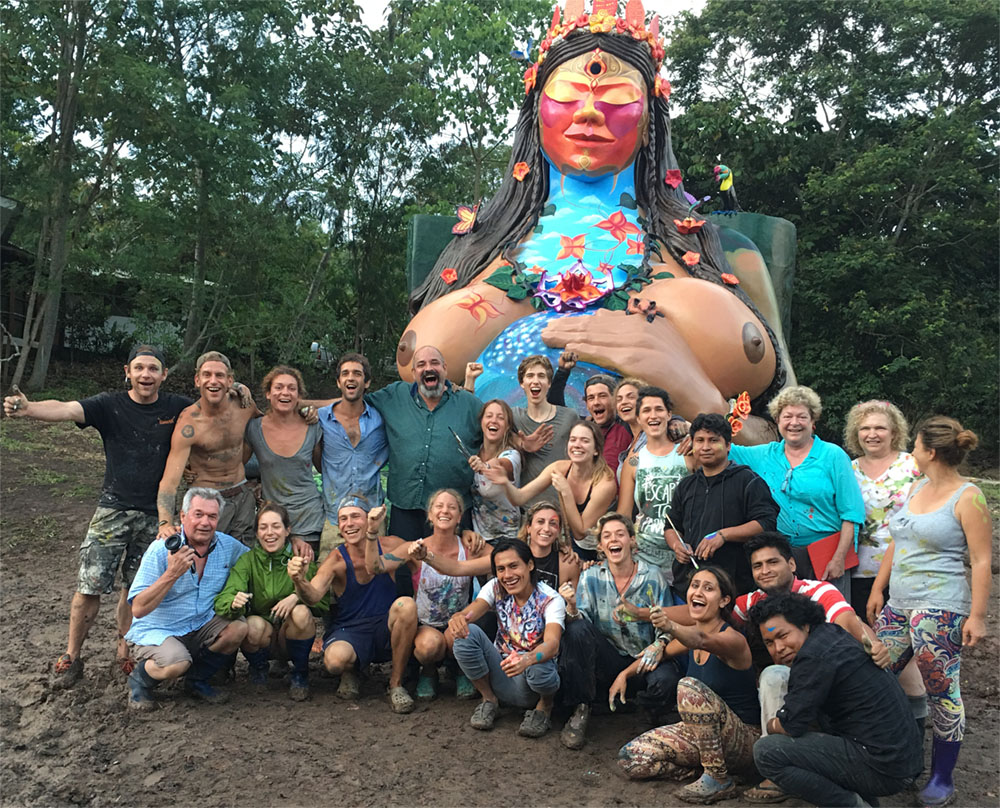On Collective art, and introducing our new Facebook Group, Collective Art Initiative!
Collective Art is art created in collaboration among more than one person. Similarly to many other concepts, there are different degrees, levels and depths of collaboration. Collective Art starts with two or more people collaborating on executing one artist’s vision and this is first level collective art, regardless of the number of people. Examples of this range from small projects of under ten people to huge monuments such as cathedrals such as the Duomo in Milan or Gaudi’s Sagrada Familia in Barcelona, giant statues such as the Spring Temple of Buddha in China standing 128 meters tall (as tall as a 40 story skyscraper) or the Laykun Setkyar Buddha statue in Myanmar and the Sphinx in Egypt, requiring often hundreds or even tens of thousands of builders, sculptors and painters to execute one man’s vision. And let us not forget giant, ephemeral structures at events such as Burning Man and many other festivals and gatherings. A similar example in a different field would be orchestras, philharmonics, movies and theater. Everybody is an artist but the final creation is according to one person’s vision. In this case one person, or a comparatively small group of people own 90% of the pride in the final result.
The second level of collectivity in art is where two or more people work side by side in the same location but each one doing their individual art piece without any agreed connection between the artists. Examples of this is the graffiti on the Berlin wall, festivals, street art etc. In this case, each and every artist own 100% of the pride for their individual, distinct creations and a small part of the pride for the participation and the collective final result.
A third, deeper level of collectivity in art is where artists gather together, each to do their own thing but on a prearranged central theme or style. Again, in these cases each artist owns 100% of the pride from their individual contributions but a much higher and deeper level of pride in the collective result. Examples such as rap collectives where people create and perform rap music on the basis of shared ideologies or sculpture farms sharing a theme such as the Runnymede in California or the Gibbs in New Zealand. In most of these cases the greatest part of ownership of the collective pride goes to the organizers or those who commissioned the art project.
A fourth, even deeper level of collaborative art is when two or more people form a collaborative artistic relationship based on trust and mutual respect, interchanging roles and adding their ideas and visions together to an art project that makes each and every single one of the participants owning a big but not necessarily equal part of the pride for the final creation. It is more common in music, with bands such as the Beatles where besides their individual musical or vocal skills albums were produced with several songwriters, singers and performers, but much less so in visual arts.
The fifth and deepest level of collaborative art is when trust is a given rather than something proven through close relationships when people develop the vision collectively and are fully interchanging and collaborating in the execution, vision and theme of the final creation. In this case artists would offer their skills and visions to many parts of the final product, often working on different parts of the creations on different moments, one sculpting for example the face of a sculpture while another does the body, or when people take charge of different stages of the creation. Artists would sculpt part of a sculpture and paint parts of another, discussing openly and evolving the collective vision for the project together and in agreement, shifting the project accordingly, choosing for the final result to fulfill and offer pride equally to every single participant. An example of this is the La Mama pregnant goddess statue at TierraMitica in Peru, where 15 members of the community sculpted the 6.5 meter concrete statue in 80 days and together with 10 guests, professional artists and ordinary guests painted it collectively in just five days. This constituted the first truly 5th level of collective art project. We are inspired, and so we have created a Facebook group, Collective Art Initiative, aimed to inspire and foment more and deeper collective art projects around the world, where every single person that chooses to participate is welcomed, trusted and invited to participate and share in the pride of creation, the most divine energy humans can experience and share.


